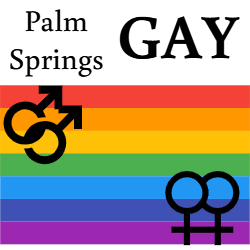The best time to visit Palm Springs is between January and April when the weather is the most hospitable. Remember: The Coachella Valley Music and Arts Festival is a popular event held every April.
What months does it rain in Palm Springs?
The rainy season of the year lasts 4.5 months, from November 14 to March 31, with a rolling 31-day rainfall of at least 1.5 inches. The month with the most rain in Palm Springs is February, with an average rain of 1.5 inches.
.
What is the rainiest month in Palm Springs?
The month with the most rain in Palm Springs is February, with an average rain of 1.5 inches. The rainless period of the year lasts 7.5 months, from March 31 to November 14. The month with the least rainfall in Palm Springs is June, with an average rainfall of 0.0 inches.
What is the best time of year to go to Palm Springs? October – December. The back end of the year is (perhaps not so secretly) the best time to visit Palm Springs. It has the preferable average temperatures of January – March (33 degrees in October, 21 degrees before December) but without such an influx of tourists and visitors. The best of both worlds, as they say.
How often does it rain Palm Springs?
350 Days of Sunshine Rainfall is almost nonexistent and humidity is low in the Palm Springs area, reflecting the minimum annual rainfall in Palm Springs is limited to approximately 5.8 inches, with 10 or fewer days each year during which rain actually falls. in Palm Springs, CA.
Does it rain in Palm Springs in summer?
Palm Springs, known for its arid climate, usually sees precipitation in the summer, but not this early. Monsoon season generally arrives in July and August.
Does it rain a lot in Palm Springs?
The total annual rainfall in the Palm Springs area is very limited. In January and February, the average rainfall is about an inch or less each month. For the year, the average total rainfall in Palm Springs is about 5 inches—or less—for the annual total.
Is there a rainy season in Palm Springs?
Palm Springs, known for its arid climate, usually sees precipitation in the summer, but not this early. Monsoon season generally arrives in July and August.
Does it rain a lot in Palm Springs?
The total annual rainfall in the Palm Springs area is very limited. In January and February, the average rainfall is about an inch or less each month. For the year, the average total rainfall in Palm Springs is about 5 inches—or less—for the annual total.
What are the best weather months Palm Springs?
The months of December through April serve up some of Palm Springs’ best weather, as well as the greatest temperature change from day to night. Expect mild, sunny days reaching 70ºF and cool evenings in the mid-40s; remember to pack layers when traveling during the winter months.
Does it rain a lot in Palm Springs?
The total annual rainfall in the Palm Springs area is very limited. In January and February, the average rainfall is about an inch or less each month. For the year, the average total rainfall in Palm Springs is about 5 inches—or less—for the annual total.
How often does it rain in Palm Springs? The rainfall is almost non-existent and the humidity is low in the Palm Springs area, reflecting the minimum annual rainfall total in Palm Springs is limited to about 5.8 inches, with 10 or fewer days each year during which rain actually falls in Palm Springs, CA.
Is Palm Springs dry or humid?
Abundant sunshine, low humidity and year-round high temperatures are the main characteristics of the weather in Palm Springs. Winter days are among the mildest in the United States, and the high temperature is rarely below 65°F although a few nights each year drop below zero.
Is Palm Springs dry or humid?
Abundant sunshine, low humidity and year-round high temperatures are the main characteristics of the weather in Palm Springs. Winter days are among the mildest in the United States, and the high temperature is rarely below 65°F although a few nights each year drop below zero.
Sources :
